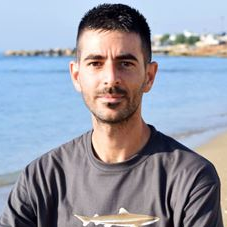Biodiversity of the Mediterranean Sea: Challenges and Management in a Changing Sea
A special issue of Journal of Marine Science and Engineering (ISSN 2077-1312). This special issue belongs to the section "Marine Biology".
Deadline for manuscript submissions: closed (30 March 2023) | Viewed by 4763

Special Issue Editors
Interests: marine biology; conservation biology; fish ecology and taxonomy; fishery research; biological invasions
Special Issues, Collections and Topics in MDPI journals
Interests: marine biology; marine bioinvasions; anthropogenic changes in macrobenthos in coastal and deep waters; dynamics/conservation of marine biodiversity; decapod crustacean taxonomy and ecology
Special Issue Information
Dear Colleagues,
The biodiversity of the Mediterranean Sea is changing, and this is mainly due to human activities. Indeed, activities such as the opening of the Suez Canal, shipping, aquarium releases, and aquaculture have reshaped biodiversity and ecosystems, with the introduction of hundreds of alien species. However, other activities such as pollution, habitat destruction and overfishing have also led to changes in local biodiversity, with rarefaction and, in some cases, the local extinction of species. In addition, the warming of marine waters has contributed to species shift and redistribution. In this regard, some species have expanded their range northwards (meridionalization process), sometimes showing invasive behavior and/or representing new opportunities for fishing activities. The purpose of this Special Issue is to publish high quality and impactful research articles with respect to several aspects of challenges and management concerning Mediterranean biodiversity changes due to all aspects related to the phenomena discussed above.
Dr. Francesco Tiralongo
Prof. Dr. Bella Galil
Guest Editors
Manuscript Submission Information
Manuscripts should be submitted online at www.mdpi.com by registering and logging in to this website. Once you are registered, click here to go to the submission form. Manuscripts can be submitted until the deadline. All submissions that pass pre-check are peer-reviewed. Accepted papers will be published continuously in the journal (as soon as accepted) and will be listed together on the special issue website. Research articles, review articles as well as short communications are invited. For planned papers, a title and short abstract (about 100 words) can be sent to the Editorial Office for announcement on this website.
Submitted manuscripts should not have been published previously, nor be under consideration for publication elsewhere (except conference proceedings papers). All manuscripts are thoroughly refereed through a single-blind peer-review process. A guide for authors and other relevant information for submission of manuscripts is available on the Instructions for Authors page. Journal of Marine Science and Engineering is an international peer-reviewed open access monthly journal published by MDPI.
Please visit the Instructions for Authors page before submitting a manuscript. The Article Processing Charge (APC) for publication in this open access journal is 2600 CHF (Swiss Francs). Submitted papers should be well formatted and use good English. Authors may use MDPI's English editing service prior to publication or during author revisions.
Keywords
- Mediterranean Sea
- biological invasions
- alien species
- invasive species
- marine biodiversity
- global change
- seawater warming
- fisheries
- Suez Canal
- management plans






